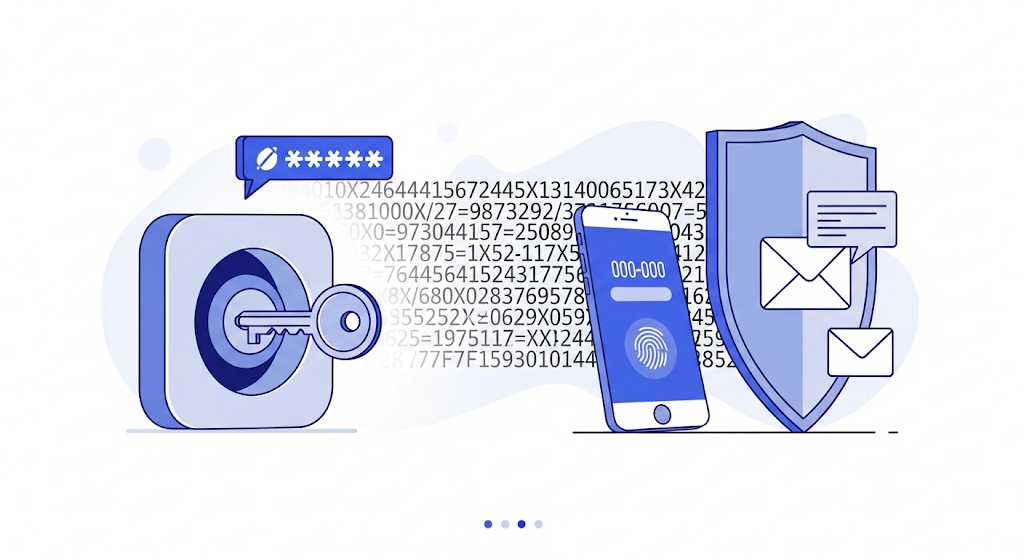McDonald’s AI Bot Leaked Millions: The ‘123456’ Password Fiasco

How “123456” as a password for McDonald’s AI Recruiter Exposed Millions of Data. Cybersecurity lessons for everyone: from passwords to crypto keys.
In a world where artificial intelligence helps recruit employees and corporations spend millions on digitalization, the biggest threat can hide in the simplest human oversight.
A recent incident involving McDonald’s online hiring system vividly demonstrated this. Olivia, a high-tech AI bot designed to evaluate candidates, was protected by the password “123456”. This curious yet dangerous blunder granted researchers access to data from over 200 million applicants worldwide and served as a harsh reminder that basic cybersecurity principles cannot be ignored.
Weak Passwords: A Systemic Threat and the Domino Effect
The story of McDonald’s and their partner Paradox AI (a major player in HR technology and developer of the Olivia bot) is a classic example of how neglecting basic security rules nullifies any technological sophistication. Ethical cybersecurity researchers Ian Carroll and Sam Curry effortlessly gained administrative access to the system simply by trying one of the most common and weak password combinations in the world.
As a result, they obtained names, email addresses, and phone numbers of a vast number of people who had entrusted their data to a well-known brand. This wasn’t just carelessness; it was a critical vulnerability. They immediately reported the vulnerability, and Paradox AI promptly fixed it, preventing a potentially catastrophic data leak.
The problem of weak passwords is systemic. In pursuit of convenience, users and even system administrators often choose easily memorable combinations like “password,” “qwerty,” “111111,” or their date of birth. For malicious actors, this is a real gift. Using brute-force methods (dictionary attacks) and social engineering, they can crack such accounts in mere seconds. The consequences can be catastrophic: from identity theft and financial losses to reputational damage for the company that allowed the leak. The McDonald’s case clearly demonstrates that even in a multi-billion dollar corporation, the weakest link is often human carelessness.
Beyond “qwerty”: New Rules for Password Security
So, how can you protect yourself and your data in the digital world? The answer lies in a comprehensive approach that applies to every user. The first line of defense is creating a strong and unique password for each individual service. Forget simple character substitutions; length is critically important today. A password of 12-16 characters, or even better, an entire phrase with spaces (e.g., “I love coffee in the morning”) is far more secure than a short, albeit “complex,” combination.
Remembering dozens of such passwords is impossible, and this is where password managers (like Bitwarden, 1Password, or built-in solutions from Apple and Google) come to the rescue. These programs not only generate ultra-complex combinations but also securely store them in an encrypted form, automatically filling them in on the correct websites and even checking for breaches.
The second indispensable layer of protection is two-factor authentication (2FA). Even if an attacker steals your password, they won’t be able to access your account without a second factor. Beyond SMS codes, which can be vulnerable, consider using authenticator apps (Google Authenticator, Authy) or, for maximum security, hardware security keys (YubiKey).
Here are your steps to robust data protection:
- Use long, unique passwords. The longer, the better.
- Install a password manager. It’s your primary tool.
- Enable two-factor authentication (2FA) wherever possible, prioritizing authenticator apps or hardware keys.
- Never reuse the same password for different services.
- Be vigilant against phishing and suspicious links.

Lessons from Crypto: The Ideal of Data Security
If we’re looking for an example of near-absolute digital security, we should turn our attention to the world of cryptocurrencies. At its core lies cryptography, where access to assets is protected not just by a password, but by a private key, most often represented as a seed phrase, a sequence of 12 or 24 random words. This phrase is your primary and sole key to your wallet.
The key difference from traditional systems lies in decentralization. There’s no administrator here who could reset your password. If you lose your seed phrase, you lose access to your funds forever. This places enormous responsibility on the user but also provides an unprecedented level of control and security.
To understand how robust this is, let’s turn to mathematics. The standard dictionary for generating seed phrases (BIP-39) contains 2048 words. For a 12-word phrase, the number of possible combinations is 2048^12.
That’s a number with 39 zeros. The probability of randomly guessing such a combination is so negligible it can be considered zero. Against this backdrop, guessing the password “123456” looks like child’s play. This example clearly shows the security ideal that digital systems should strive for.
Ultimately, the McDonald’s incident isn’t so much a story of AI failure as it is a perennial reminder of the human element. Technology can be as sophisticated as it gets, but it remains vulnerable if we neglect the fundamentals. Cybersecurity is a shared responsibility. Companies must implement robust data storage protocols, and users must consciously approach password creation and utilize all available protection tools.
Start by installing a password manager and enabling two-factor authentication on all your important accounts today! After all, in the digital world, the strength of the entire chain is determined by the strength of its weakest link.
The information published on CoinRevolution is intended solely for general knowledge and should not be considered financial advice.
While we aim to keep our content accurate and current, we make no warranties regarding its completeness, reliability, or precision. CoinRevolution bears no responsibility for any losses, errors, or decisions made based on the material provided. Always do your own research before making financial choices, and consult with a qualified professional. For more details, refer to our Terms of Use, Privacy Policy, and Disclaimers.










